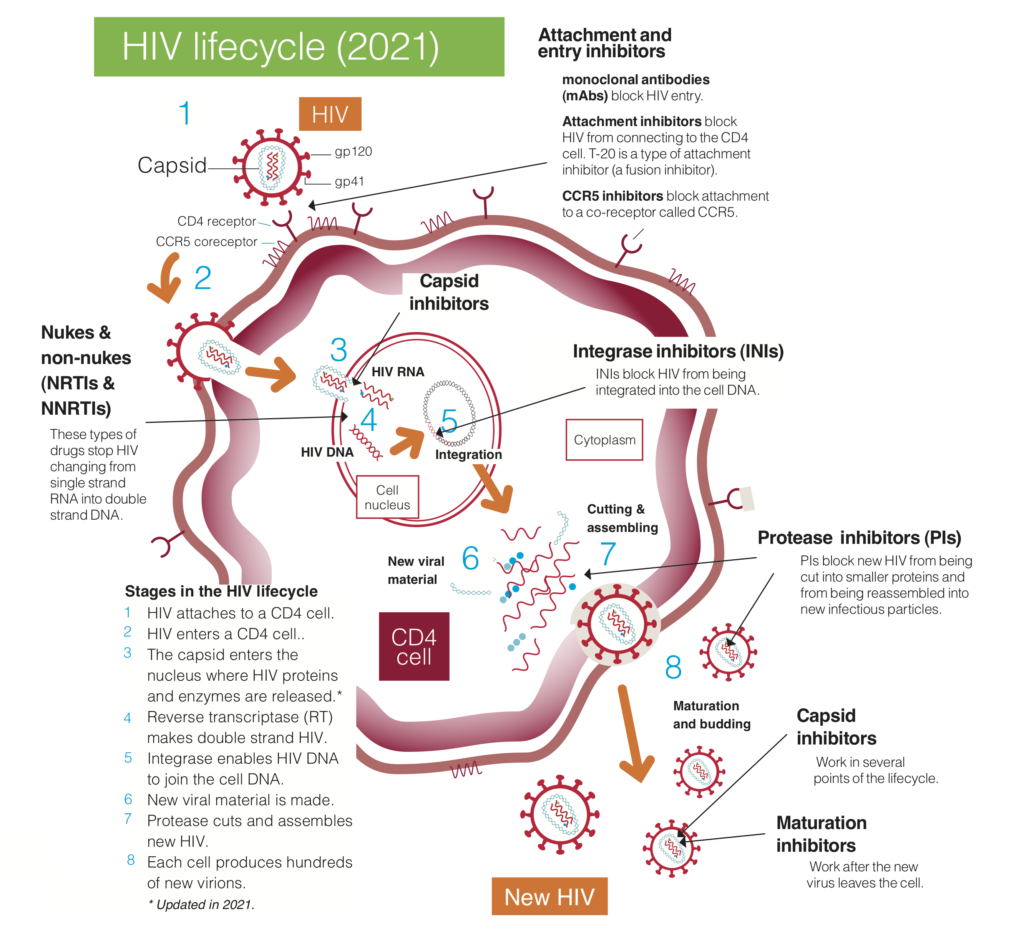3. 5 How HIV drugs work – main types of drugs
Like every living organism, in order to survive, HIV needs to reproduce. For a virus, this is called replication.
HIV mainly does this inside CD4 cells.
HIV medicines block (or inhibit) different stages of this process.
The different stages and types of drugs are listed below.
- Nucleoside and nucleotide reverse transcriptase inhibitors (nukes or NRTIs).
- Non-nucleoside reverse transcriptase inhibitors (non-nukes or NNRTIs).
- Protease inhibitors (PIs).
- Entry inhibitors. This includes fusion inhibitors and CCR5 inhibitors.
- Integrase inhibitors (INSTIs).
- Monoclonal antibodies (bNAbs) are another type of entry inhibitor. Unlike these other drugs, they are immune-based treatments.
- Capsid inhibitors (CIs).
- Budding and maturation inhibitors (research stage only).
Different drugs work at different stages of the HIV life cycle
HIV uses a CD4 cell as a factory to make hundreds of copies of itself.
- Entry inhibitors work by stopping HIV getting into the CD4 cell.
- Nukes and non-nukes work by stopping HIV becomes a double strand of DNA.
- Integrase inhibitors work by stopping HIV from being integrated into human DNA (genetic material).
- Protease inhibitors work by stopping any new HIV from being cut into smaller, manageable proteins.
- Capsid inhibitors work at several stages. One stage is to stop the capsid releasing viral enzymes in the cell nucleus. They can also work at a late stage when new virus is being completed. There is a capsid inhibitor in late stage development.
- Budding and maturation inhibitors work by stopping any new HIV from being able to go on to infect other CD4 cells. These are still in research.
Further reading
The 2021 i-Base adult pipeline report includes a chapter on antiretrovirals.
This is a review of new drugs, combinations and drug classes in development.
Last updated: 1 January 2023.

